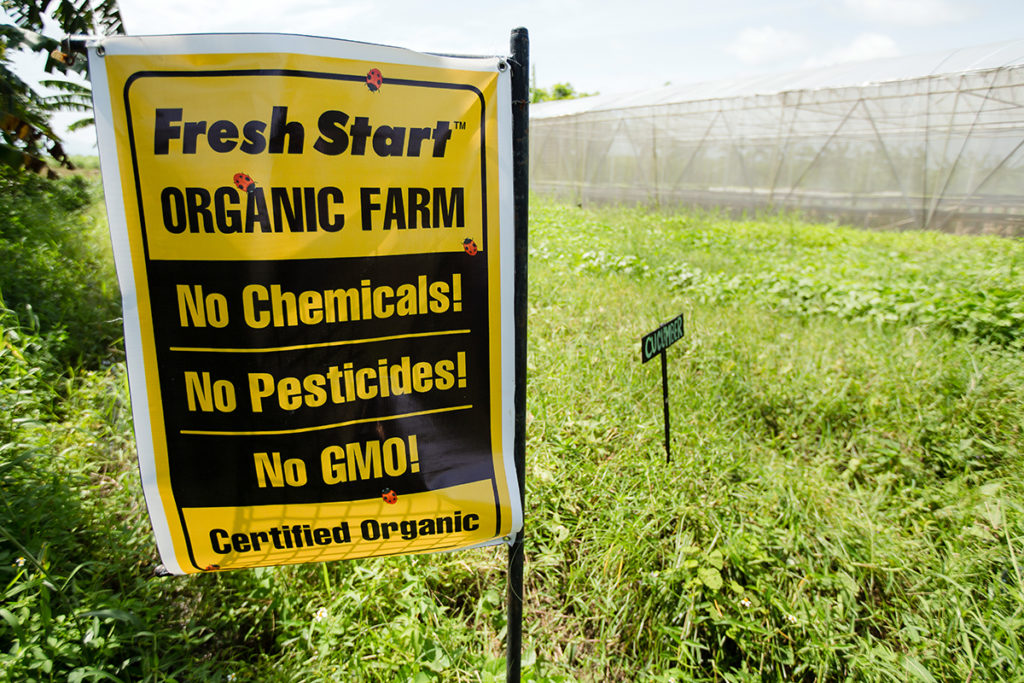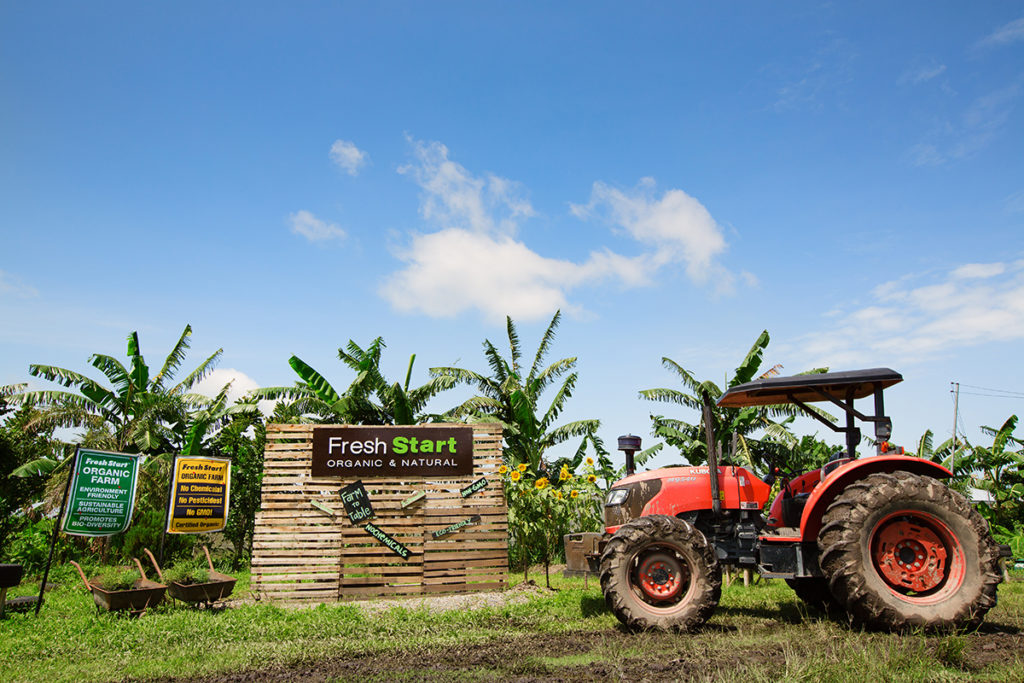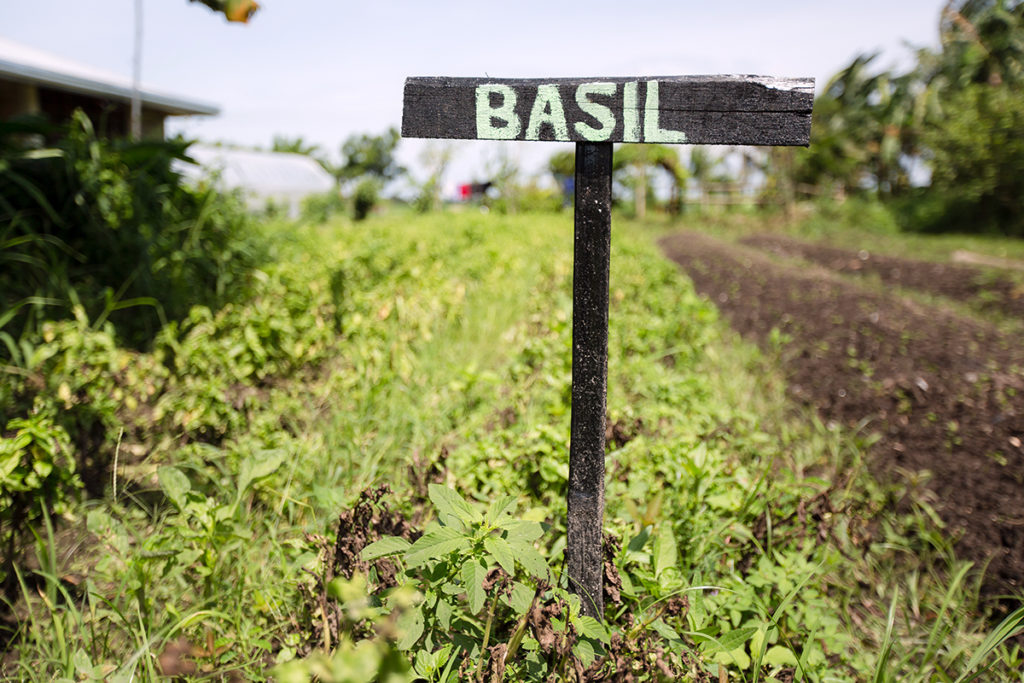“We couldn’t have done it on our own,” says Ramon “Chin Chin” Uy, Jr., founder of Fresh Start Organics and president of the Organic na Negros! Organic Producers and Retailers Association, on the organic movement of the Negros provinces.
“It took the cooperation of the government, different stakeholders, and the consumers’ support of the organic movement for it to become successful. Had one of these weren’t in the mix, it wouldn’t have taken off.”
Ten years ago, the local governments of Negros Oriental and Occidental signed a memorandum of agreement to work together and turn the island into the “Organic Food Bowl of Asia.” Since then, the provinces have produced 10,000 hectares of organic land, serving as the benchmark for the rest of the country to follow suit.
A big battle
The movement began in the 1980s when the island’s blossoming sugar industry fell, after being Asia’s largest sugar exporters since the 1700s and the third largest sugar producers in the 1800s. At the same time, the American Green Revolution, which sought to feed the world’s growing population by mass producing food using chemical fertilizers, had reached the Philippines.
With the island’s falling economy and a call for safer, more sustainable means to produce food, groups of farmers and non-governmental organizations formed the Sustainable Agriculture Program, with the goal of feeding every Negrense safe, sustainable, and affordable food.
“Agritourism,” Chin Chin Uy says, “is a good way to promote organic farms. Negros has been the training center for farmers from all around the Philippines, and all around the island, there are training centers and tours that show these farmers what they can achieve. For many of them, seeing is believing. That was all it took.”
By 2000, the impact the program had on the island caught the attention of the local government units of both Visayan provinces. The signing of the memorandum of agreement five years later saw the beginning of a partnership that would help the island diversify its products as well as create sustainable livelihoods and facilitate rural development for both provinces. One year after, in 2006, the Organic Festival was organized to bring together these alternative groups and create programs to help sustain and support the movement.
Uy says it didn’t take a lot to convince farmers to make the switch from conventional methods to organic practices. “Agritourism,” he says, “is a good way to promote organic farms. Negros has been the training center for farmers from all around the Philippines and all around the island, there are training centers and tours that show these farmers what they can achieve. For many of them, seeing is believing. That was all it took.”
With key stakeholders working together, it wasn’t long until the movement reached one of its biggest milestones yet in 2007: the passing of Ordinance 007, which bans the entry of GMO to the province. The movement hit a rough patch two years later, however, when a shipment of GMO corn worth P18 million was rejected at the capital’s port in Bacolod City, in compliance with the city ordinance.
GMO lobby groups reacted by pushing for hearings to reconsider the ban and throughout 2009, a series of debates and hearings were conducted to discuss the matter. Resource speakers from both parties as well as international and local experts were brought in to discuss their points. Organic advocates in civil society groups, the church, Greenpeace International, organic farmers and advocates, and The Hotel and Restaurants Association, together with chef and restaurateur Margarita Forés, showed their support to uphold the ban and continue the island’s organic movement. The resulting decision was in favor of upholding the ban, thus winning the movement its biggest battle yet.

Not without its own share of sacrifices, Negros is finally reaping the benefits of years’ worth of investments, yielding positive change for those who need them most. Yet despite all the work, Negros is only the beginning, as other parts of the country are still unwilling to embrace the practice because of popular misconceptions associated with organic practices such as the difficulty in implementing projects and getting large monetary investments—issues deemed heftier than the positive outcomes.
Though these misconceptions can’t be refuted, Uy points out that despite the higher premium on organic products, conventional farming is actually the costlier of the two, with consumers unaware of the additional costs. “Much of what they pay for in the long run, like health and environment issues, can’t be felt yet while they shop in the grocery.”
In sync with the government

Former Department of Agriculture (DA) Undersecretary and now Department of Tourism Secretary Berna Romulo-Puyat explains that the National Organic Agriculture Program is there to lend a helping hand by providing training and support and raising the public’s awareness. Though tedious, the bureaucratic process is necessary to ensure proper implementation that, in the long run, will reap more benefits for every stakeholder involved and ensure that farmers meet their standards at a much lower cost on both ends.
While improved health and environmental protection are among the benefits of organic agriculture, the general public remains unaware of its other results: better farm income and sustainable livelihood for farmers.
For example, long periods of organic agriculture practice result in increased farm productivity, which reduces expenses on imported farm inputs like fertilizers and pesticides; thus allowing more of the income to go to farmers. Disaster and risk reduction, though also part of environmental protection, is another lesser-known benefit, as consumers tend to forget the long-term impact of chemical inputs on soil.
“We Negrenses are now very mindful and conscious about organic and sustainable living,” Uy says. “Though both Negros governments have separate ordinances that support organic practices, we are all very serious about achieving the goal.”

Inspired by the progress of their work in Negros, Romulo-Puyat says that the Department of Agriculture is developing organic agriculture in other parts of the country as well, starting with areas where they can integrate this more sustainable method. Other provinces and municipalities that are currently developing their organic programs include Bohol, Isabela, and Iloilo.
“The DA believes that spreading organic culture in the country is a joint effort among the government, the private sector, and the civil society,” she explains. The involvement and collaboration of the said parties will raise awareness for the movement and convince more consumers to adopt organic agriculture practices, much like how it is done in the Negros provinces.
Proudly, Romulo-Puyat shares another success story much like that of Negros. In 2013, the National Organic Agriculture Board passed a resolution declaring the province of Batanes as an organic one. There, farmers practice “traditional farming” but use organic methods for making fertilizers and pest control. A big project for the DA is assisting Vuhus Island in Sabtang, Batanes in their efforts to meet international organic standards and eventually become exporters of Vuhus organic beef tapa.
“In the coming years, we’re trying to push for a syntax on the use of chemicals because while organic farmers build healthy soil, prevent soil erosion and flooding, protect the environment, and provide healthy food for consumers, at the end of the day, we end up paying P30,000 a year just to call our products organic. Conventional farmers, on the other hand, are free to spray and use chemicals without much trouble.”
In the span of 10 years, much has been done to change organic agriculture not only in Negros but also around the country. But despite being proud of their collective achievements, Uy stresses that there is still much to be done.
“In the coming years, we’re trying to push for a syntax on the use of chemicals because while organic farmers build healthy soil, prevent soil erosion and flooding, protect the environment and provide healthy food for consumers, at the end of the day, we end up paying P30,000 a year just to call our products organic. Conventional farmers, on the other hand, are free to spray and use chemicals without much trouble.”
For Romulo-Puyat, she’s confident that in five to 10 years, organic agriculture will be widely practiced around the country and will continuously be used as a strategy for attaining food security. She notes with pride that from 14,000 hectares of organic land in the Philippines in 2006, the number has increased to 101,000 in 2013.
“Organic farming couldn’t work back then because there was no means for farmers to share information with one another and we were too preoccupied with the Green Revolution,” says Uy. “Our involvement brought unnecessary technologies to our doorstep, but 40 years later, there hasn’t been much improvement. It’s now time to take different steps and point farming in the right direction. It’s a slow process but this time around, the success of organic farming is possible.”
Originally published in F&B Report Vol. 13 Issue 1









































